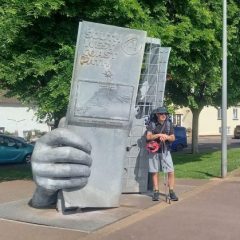Three days of field schools with Peter Hardy, author of ‘The Geology of Somerset’ and Gill Odolphie, Adel Avery and Juliet Lawn from the Somerset Earth Science Centre. In conjunction wit the Geological Society’s Earth Science Week.
Day 1, 12th October:
After an introduction to the chronology of Mendip Rocks from the Silurian c.443 million years ago to the end of the Jurassic c.142 million years ago, and discussions regarding the formation of the Mendip Hills during the Variscan Orogeny we jumped onto a mini-bus for a tour of some local quarries.
At Moon’s Hill we examined the Silurian pyroxene andesite, lavas, fault features and breccias, agglomerates,etc.

Onto the Torr Works super quarry to look at the Carboniferous rocks found there. We had some very good views of the unconformity where Jurassic rocks can be observed to overlie Carboniferous rocks.

Fossils included horn corals, brachiopods and trace fossils left by burrowing animals, we also noted fault features.
The last visit of the day was to Doulting Stone Quarry to examine the Jurassic rocks found there.
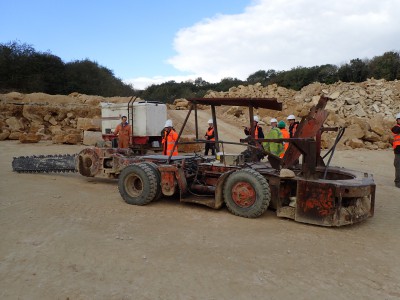
The machine pictured above is used to ‘saw’ into the rock. We found more evidence for burrowing animals, there were fossil belemnites too. A discussion of the Doulting rock type established that it did not appear to be made of ooliths but is made up of calcite crystal that are likely to be remnants of Carboniferous crinoid being reworked and incorporated into the later rock formation.
Day 2, 13th October:
The day started with a slideshow presented by Juliet on the ‘Geology of the Mendips’. Peter then organised a closer look at fossils from the Coal Measures.
Field trips to Ubley Warren and Burrington Combe including lunch in the Burrington Inn ensued thereafter.

At Ubley Warren we discussed the evidence for mining that remains how the ores were formed and looked at the fossils seen in the limestone.
After lunch we explored Burrington Combe looking at corals, dolomite exposures and moving up to the lower Limestone Shales in West Twin Brook, at the base of the Old Red Sandstone.
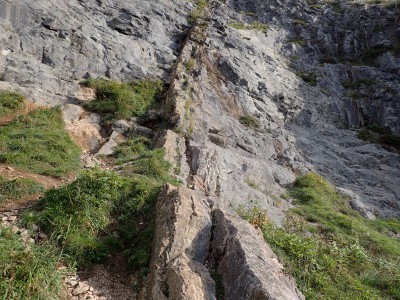
Day 3, 14th October:
The day was spent exploring Carboniferous volcanics and associated rock and structures at Swallow Cliff and Middle Hope on Sand Point, unfortunately you have to go through Weston Super Mare to get here.

The things discussed included raised beach deposits, pillow lava, basaltic tuff, volcanic ash, the relative relationship of these events with the Variscan Orogeny – the volcanic activity pre-dates the mountain building period when uplift occurred.

Fossils found included Michelina, a colonial coral; Spirifer and Rhynconellid brachiopods, etched out of the rock and deep red in colour; solitary corals such as Zaphrentis; and the burrows made by escaping Lingula brachiopods as they became buried by successive layers of volcanic ash.

The weather was glorious for mid-October far better than had been predicted.
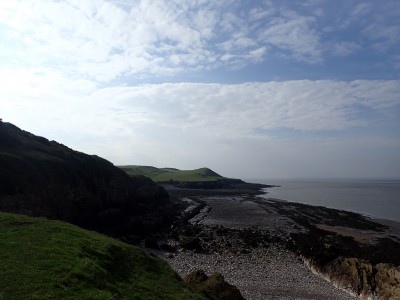
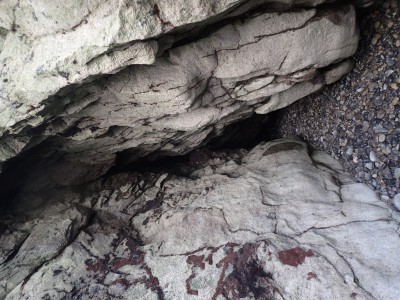
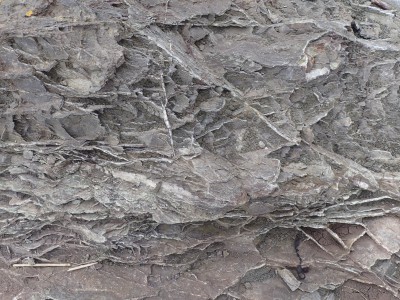
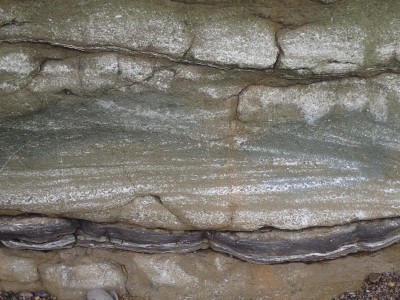
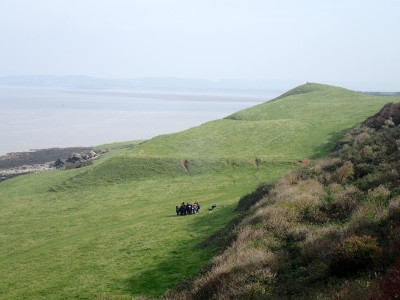
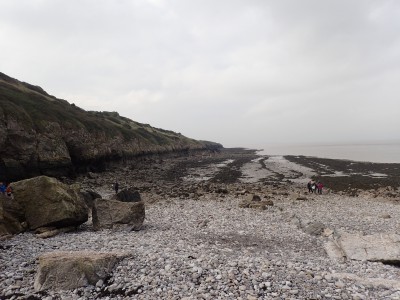
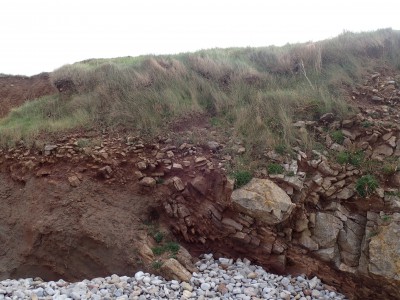
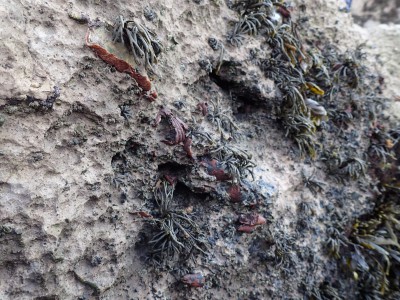
There was some interesting archaeology as well including field systems, dry stone walls, and mounds, a lot of this is probably associated with Woodspring Priory, and there were some small sea caves!
